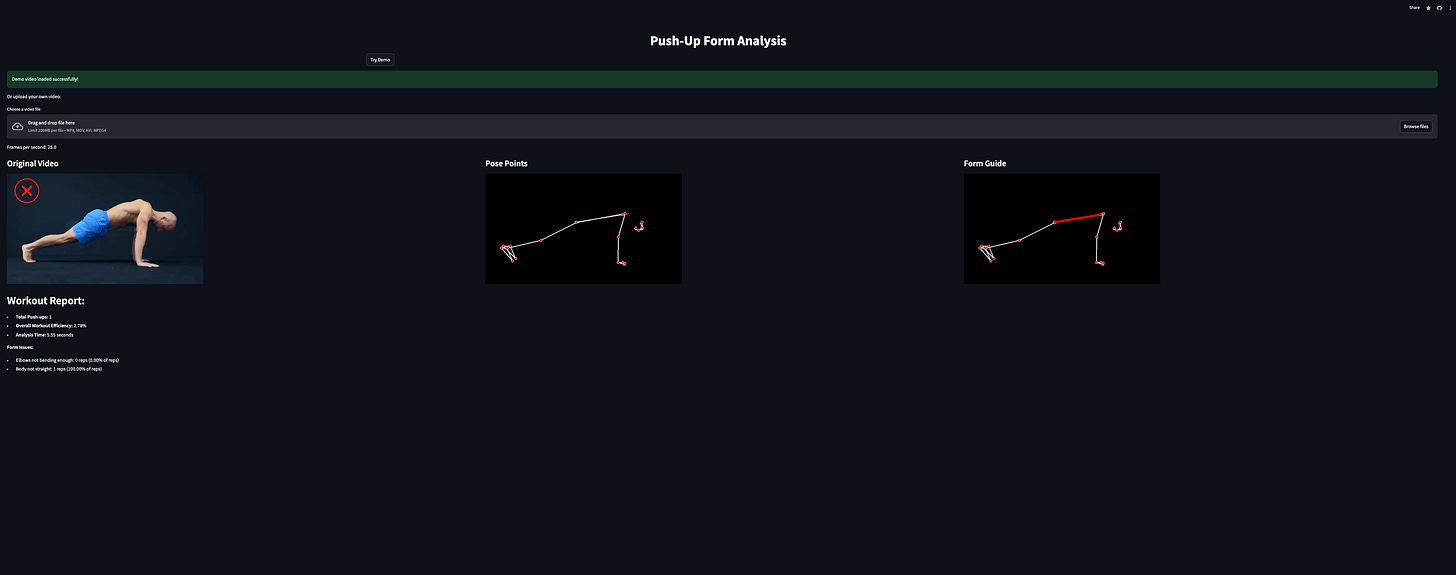Disclaimer: The accuracy of the push-up form analysis can be affected by various factors such as camera angle, lighting conditions, occlusions, and the quality of the input video. For best results, ensure that the camera is positioned at an appropriate angle and the subject is clearly visible.
Introduction
Welcome to Workout Easz 2.0! Building on the success of our previous Squat Easz app, we have now expanded our analysis capabilities to include push-ups. Just like Squat Easz, this new feature leverages the power of MediaPipe for accurate and real-time body landmark detection. This update aims to further enhance athletic performance and prevent injuries through precise form analysis and instant feedback.
Key Landmarks for Push-Up Analysis
For push-up analysis, we focus on the following key landmarks:
Shoulder (left and right)
Elbow (left and right)
Wrist (left and right)
Hip (left and right)
Ankle (left and right)
These landmarks are crucial for calculating the joint angles and body alignment in push-ups.
Calculation of Joint Angles for Push-Up
Elbow Angle
The elbow angle is formed by the shoulder, elbow, and wrist.
It is calculated as
Body Alignment Angle
The body alignment angle is formed by the shoulder, hip, and ankle.
It is calculated as
Form Issue Detection for Push-Up
Ideal Angle Ranges:
Elbow Angle: 90 to 110 degrees (at the bottom of the push-up)
Body Alignment Angle: 170 to 180 degrees (straight body)
Detection of Deviations:
Incomplete Push-up: Elbow angle > 110 degrees at the bottom
Elbow Flaring: Elbow angle < 90 degrees
Sagging Hips: Body alignment angle < 170 degrees
Providing Suggestions for Push-Up
Based on the detected form issues, specific suggestions are provided:
Incomplete Push-up:
Suggestion: "Lower your body further. Aim to bring your chest closer to the ground for a full range of motion."
Elbow Flaring:
Suggestion: "Keep your elbows closer to your body. Tuck them in to engage your chest and triceps more effectively."
Sagging Hips:
Suggestion: "Maintain a straight body line. Engage your core to keep your hips aligned with your shoulders and ankles."
Key Learnings:
Data Denormalization: MediaPipe provides normalized coordinates that need to be converted to pixel values for precise analysis. This is achieved by multiplying the normalized coordinates by the frame's width and height.
Check it out:
Link to the app: Squat Easz App
Link to the article: Squat Form Analysis Article
#ComputerVision #FitnessTech #AI #MediaPipe #SquatForm #PushUpForm #MachineLearning


